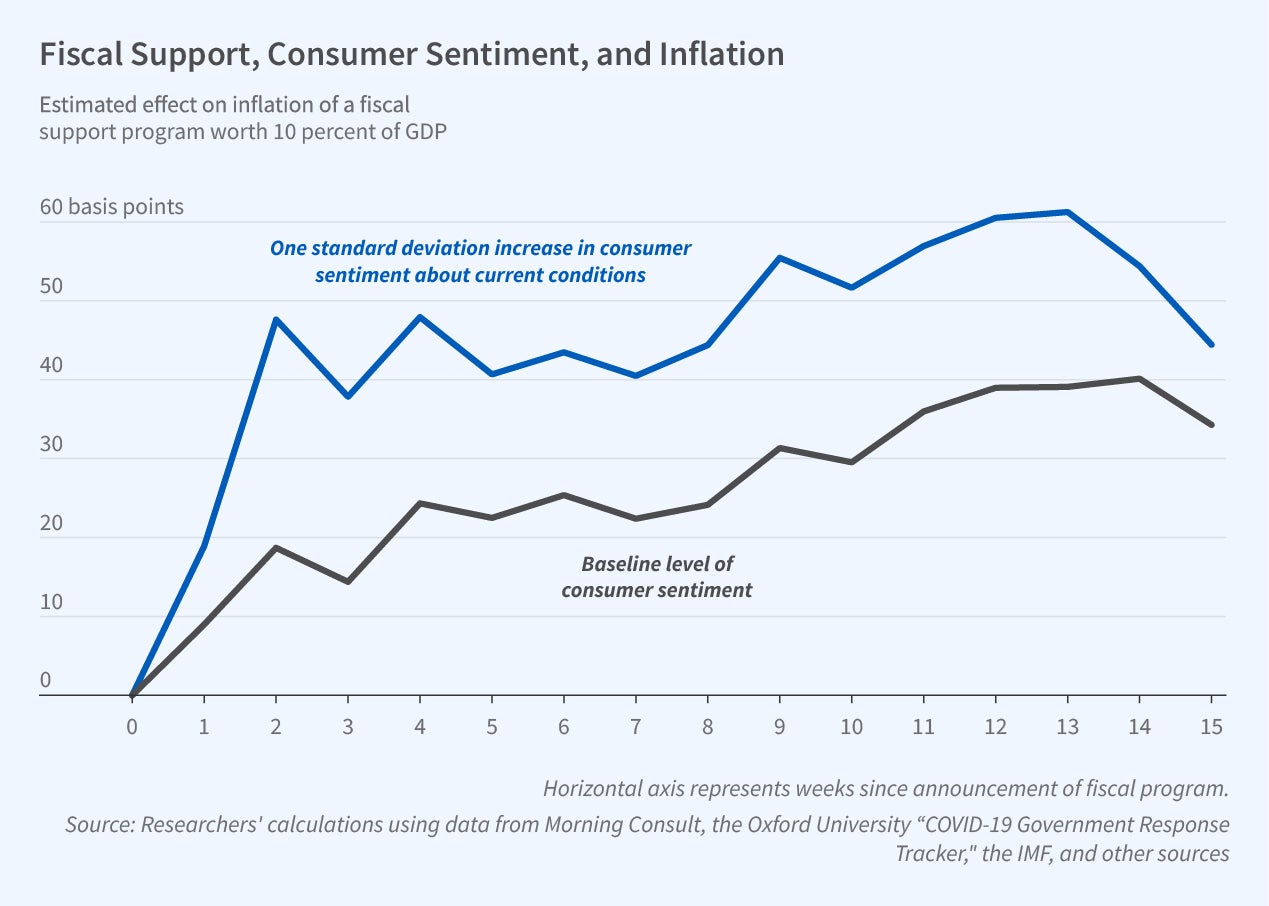Pandemic-Related Stimuli and the Rise of Inflation

Government measures designed to soften the blow of the COVID-19-related recession had different inflationary impacts depending on whether the relief targeted consumers or firms.
At the onset of the COVID-19-related recession, many governments rapidly introduced support measures to alleviate the effects of lockdowns on household incomes and business revenues. Support varied across countries in a number of dimensions. Some nations focused on income supplements or on debt relief, while others supported housing demand, disbursed aid directly to households, or focused on job protection and supported employers. The Paycheck Protection Program in the United States is an example of an employer-focused initiative.
In Inflationary Effects of Fiscal Support to Households and Firms (NBER Working Paper 30906), Galina Hale, John C. Leer, and Fernanda Nechio study the inflationary effects of these fiscal support measures. They investigate how the effects differed depending on whether the support programs were directed at consumers or businesses.
The researchers study fiscal relief measures in 10 large advanced and developing economies. They draw data from the Oxford COVID-19 Government Response Tracker (OxCGRT) database for information on the size of fiscal relief programs and the target groups. They also analyze policy announcements to construct a catalog of fiscal policies focused on consumers and on businesses. In addition, they draw sentiment data from Morning Consult’s daily Global Consumer Confidence survey, which, like the OxCGRT, is aggregated to a weekly frequency for this study.
First, they consider the direct effect of fiscal support measures as well as amplification through real activity. Because conventional measures of real activity were distorted due to lockdowns or supply chain disruptions, they control for the underlying state of the real economy using data on consumer sentiment. Second, they analyze differences in the outcomes of policy measures that primarily targeted households and those that primarily targeted businesses. They find that fiscal support measures, especially those that targeted consumers directly, stimulated inflation even in the early stages of the pandemic when most economies were still closed. Fiscal support measures for consumers, but not for firms, had inflationary effects five weeks following support announcements and peaked at 12 weeks.
Specifically, the researchers’ estimates show that a fiscal support program worth 10 percent of GDP generated a 40 basis point increase in the inflation rate within three months of the announcement. This effect is larger — about 60 basis points — if fiscal support is announced at a time of improving consumer sentiment about current conditions. Consumer expectations of future conditions do not seem to affect the inflationary impact of fiscal stimuli.
— Lauri Scherer


